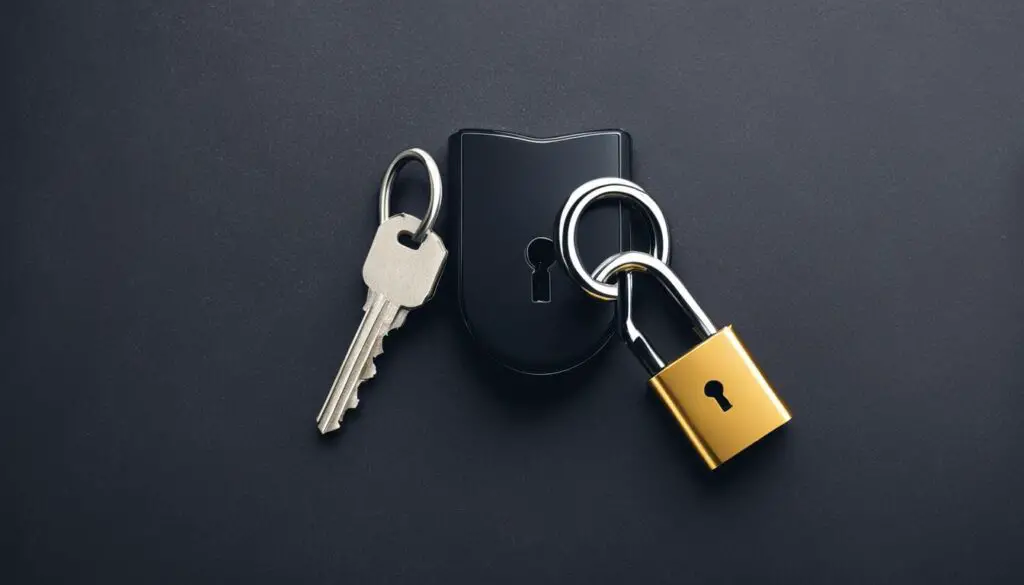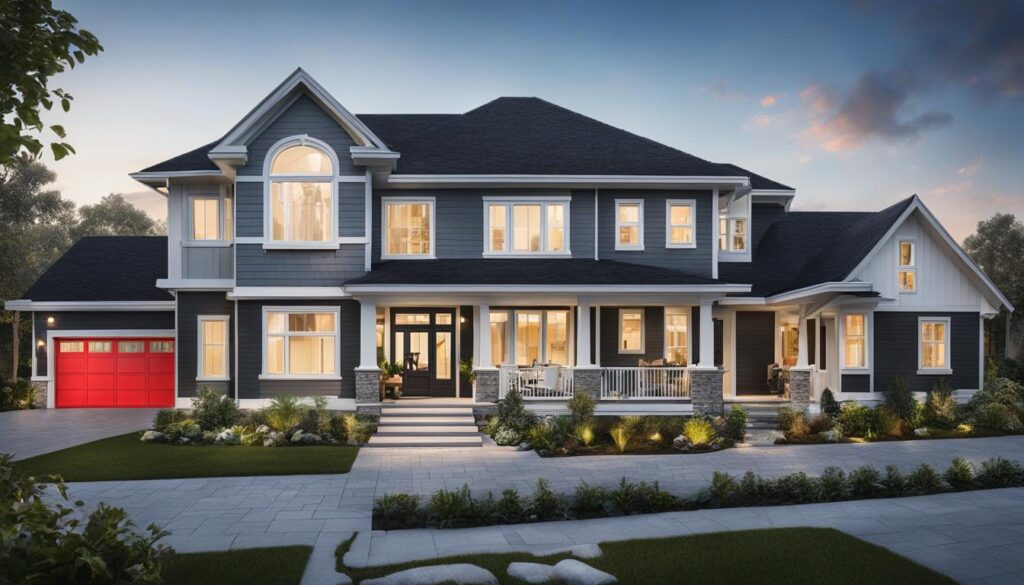As technology continues to advance, more and more homeowners are adopting home automation systems to enhance their daily lives. The convenience and control that these systems offer are undeniable, but it’s imperative to prioritize safety when integrating smart devices into your living space. In this beginner’s guide, I will provide you with essential tips and tricks to ensure that your home automation system is secure, user-friendly, and provides you with peace of mind.
Creating a secure smart home starts with making informed decisions about the devices you choose, securing your network, and protecting your personal data. By following the home automation safety tips outlined in this guide, you can create a safe and enjoyable smart home environment for you and your family.
Table of Contents
Key Takeaways:
- Home automation safety is crucial for a secure and user-friendly smart home.
- Choose reputable brands and secure devices to ensure the safety of your home automation system.
- Secure your network with strong Wi-Fi passwords, network encryption, and firewalls.
- Protect your personal data through data privacy measures like strong passwords and encryption.
- By prioritizing safety, you can enjoy the benefits of home automation while maintaining peace of mind.
Choosing Safe and Secure Devices
When it comes to building a secure home automation system, the devices you choose play a crucial role. To ensure the safety of your smart home, consider the following tips:
Prioritize Safety and Security
When selecting devices, prioritize safety and security above all else. Opt for devices from reputable brands that prioritize security in their products. By choosing devices that have a proven track record of reliability, you can minimize potential vulnerabilities.
Ensure Compatibility
Ensure compatibility between your devices and your chosen home automation platform to create a cohesive and secure system. Incompatible devices can introduce vulnerabilities and compromise the overall security of your smart home.
Authentication Features
Look for devices that offer strong authentication features, such as password protection or biometric verification. These features add an extra layer of security and help prevent unauthorized access to your smart home devices.
Regular Firmware Updates
Regularly updating the firmware of your devices is essential for maintaining their security. Firmware updates often include important security patches that address known vulnerabilities. Stay vigilant and ensure that your devices are always running the latest firmware versions.
By following these guidelines, you can build a secure and reliable home automation system that safeguards your home and provides peace of mind.
| Key Considerations for Choosing Secure Devices | Benefits |
|---|---|
| Reputable Brands |
|
| Compatibility |
|
| Authentication Features |
|
| Regular Firmware Updates |
|
Securing Your Network
A strong and secure network is essential for a safe home automation system. By taking the necessary steps to protect your network, you can ensure the privacy and security of your smart home devices.
Set a Strong Wi-Fi Password
One of the first and most important steps in securing your network is setting a strong Wi-Fi password. A weak password can easily be cracked, giving unauthorized individuals access to your network and potentially compromising your smart home devices. Choose a password that is unique, complex, and difficult to guess, combining uppercase and lowercase letters, numbers, and special characters.
Enable Network Encryption
To protect your data from being intercepted by malicious actors, enable network encryption. One common encryption method is Wi-Fi Protected Access 2 (WPA2), which provides a strong level of security for your network. Encryption scrambles your data and ensures that only authorized devices can access it.
Consider Setting Up Guest Networks
If you frequently have visitors or guests who connect to your Wi-Fi network, consider setting up separate guest networks. Guest networks provide a secure and isolated connection for your visitors, preventing them from accessing your smart home devices and network resources. This helps protect your privacy and ensures that your smart home remains secure.
Install a Firewall
A firewall acts as a barrier between your network and external networks, filtering incoming and outgoing traffic and protecting your devices from unauthorized access and potential threats. Install a firewall on your home network to add an extra layer of protection against cyberattacks and intrusion attempts.

Incorporating these measures into your home automation setup will help create a secure network environment for your smart home. By setting a strong Wi-Fi password, enabling network encryption, considering guest networks, and installing a firewall, you can confidently enjoy the convenience and benefits of home automation while keeping your network secure.
Protecting Personal Data
Protecting your personal data is crucial in a connected home. With the increasing adoption of home automation, it is essential to prioritize data privacy and implement robust security measures to safeguard your sensitive information. By following these best practices, you can ensure that your personal data is secure and protected.
Choose Home Automation Platforms That Prioritize Data Privacy
When selecting a home automation platform, opt for those that prioritize data privacy and employ strong encryption methods. Look for platforms that have a proven track record of implementing robust security measures to protect user data. By choosing a reputable and privacy-focused platform, you can minimize the risk of your personal information falling into the wrong hands.
Store Sensitive Data Securely
To maintain the security of your personal data, it is important to store it securely. Consider utilizing trusted cloud services that offer robust encryption and data protection measures. Alternatively, you can choose to store sensitive data locally on encrypted devices. By employing secure data storage practices, you can mitigate the risk of unauthorized access and data breaches.
Use Strong Passwords and Enable Two-Factor Authentication
Strong passwords are a vital component of data security. To protect your personal information, create unique and complex passwords for all your accounts related to your home automation system. Utilize a combination of uppercase and lowercase letters, numbers, and special characters to create strong and hard-to-crack passwords. Additionally, enable two-factor authentication whenever possible to add an extra layer of security to your accounts.
Consider Data Encryption
Data encryption provides an additional layer of protection for your sensitive information. By encrypting your data, you can ensure that even if it falls into the wrong hands, it remains unreadable and unusable without the decryption key. Consider employing data encryption techniques for sensitive files, documents, and communication channels to enhance the security of your personal data.

Incorporating these measures into your home automation setup will significantly enhance the privacy and security of your personal data. By choosing platforms that prioritize data privacy, implementing secure data storage practices, using strong passwords with two-factor authentication, and considering data encryption, you can confidently enjoy the benefits of a connected home while safeguarding your sensitive information.
Conclusion
Ensuring the safety of your home automation system is paramount for creating a secure and user-friendly smart home environment. By implementing the right strategies and following essential tips, you can enjoy the convenience of home automation while keeping your home and loved ones safe.
Start by choosing safe and secure devices from reputable brands that prioritize security in their products. Look for devices that offer authentication features and regularly update their firmware to stay protected against potential vulnerabilities.
Additionally, secure your network by setting a strong Wi-Fi password and enabling network encryption. Consider setting up a separate guest network to prevent unauthorized access, and install a firewall for an extra layer of protection.
Lastly, protect your personal data by choosing home automation platforms that prioritize data privacy and employ strong encryption methods. Store sensitive data securely, use strong passwords, and enable two-factor authentication when available. Adding an extra layer of data encryption can provide further security.
By following these home automation safety tips, you can confidently create a secure and user-friendly smart home that enhances your lifestyle while keeping your loved ones and belongings safe.
FAQ
Why is home automation safety important?
Home automation safety is important to ensure the protection of your family and belongings. By prioritizing safety, you can enjoy the convenience and control offered by a smart home while keeping your home secure.
What should I consider when choosing devices for my home automation system?
When choosing devices, prioritize safety and security. Select devices from reputable brands that prioritize security in their products. Ensure compatibility between devices and your chosen home automation platform to avoid potential vulnerabilities. Look for devices that offer authentication features such as password protection or biometric verification.
How can I secure my network for a safe home automation system?
To secure your network, set a strong Wi-Fi password to prevent unauthorized access. Enable network encryption, such as WPA2, to protect your data from being intercepted. Consider setting up a separate guest network for visitors to prevent them from accessing your smart home devices. Installing a firewall will also add an extra layer of protection.
How can I protect my personal data in a connected home?
Protecting your personal data is crucial in a connected home. Choose home automation platforms that prioritize data privacy and employ strong encryption methods. Store sensitive data securely, either locally or through trusted cloud services. Use strong, unique passwords for all your accounts and enable two-factor authentication when available. Consider encrypting sensitive data to provide an additional layer of protection.
How can I create a secure and user-friendly smart home?
Creating a secure and user-friendly smart home involves choosing safe and secure devices, securing your network, and protecting your personal data. By following these tips and guidelines, you can enjoy the convenience and control of home automation while keeping your home and loved ones safe.


